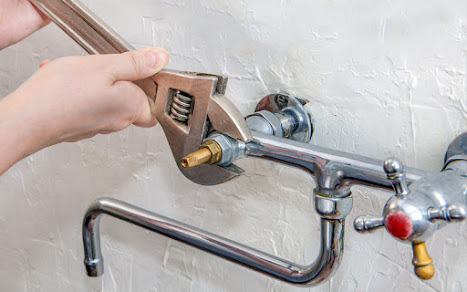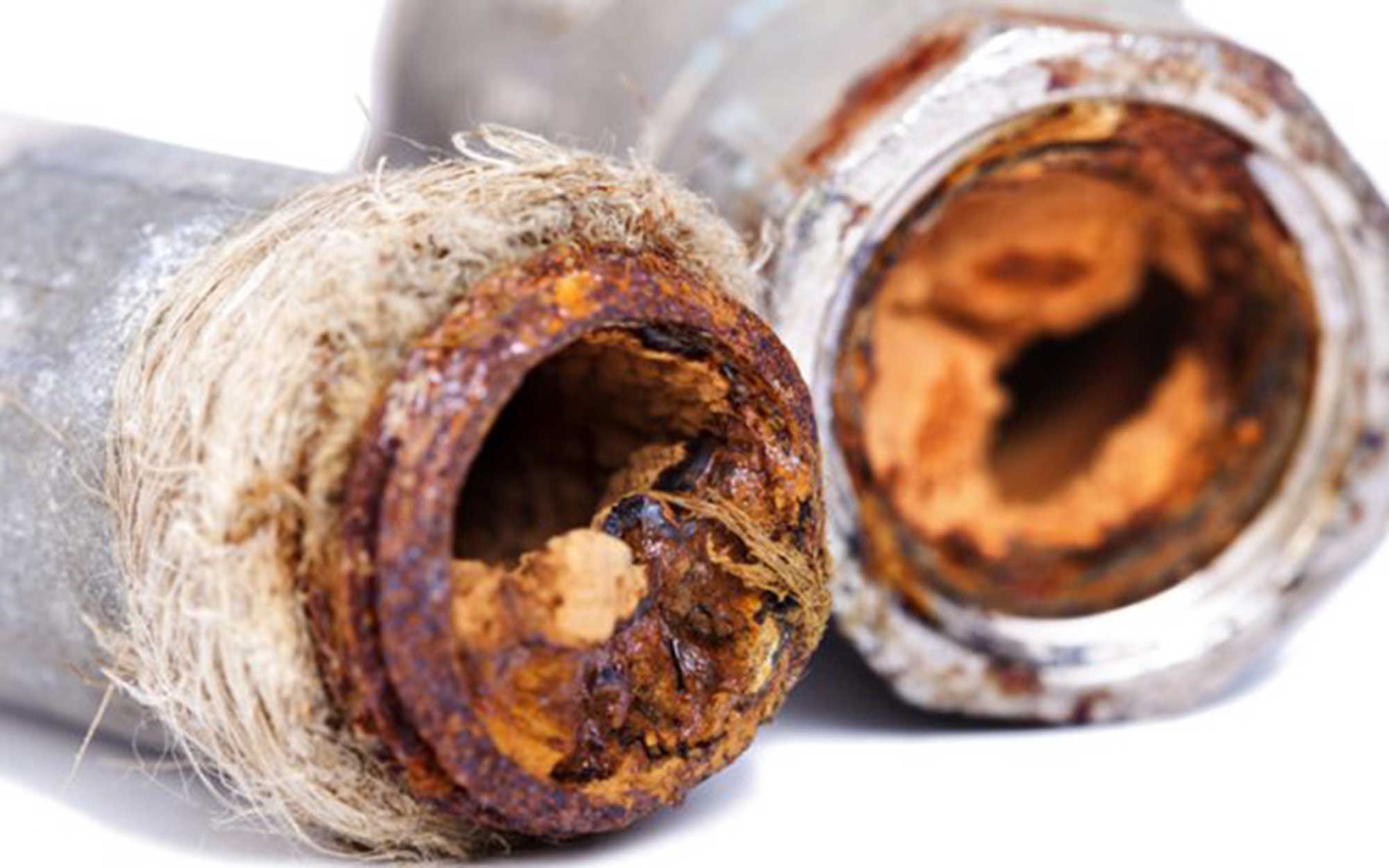Don't Take Chances: Typical Home Appliance Problems That Need a Plumbing Professional
Book InspectionNearly everybody may have their own individual perception on the subject of Why Do My Plumbing Pipes Make A Knocking Noise.

To detect noisy plumbing, it is important to determine first whether the unwanted sounds occur on the system's inlet side-in other words, when water is turned on-or on the drainpipe side. Noises on the inlet side have actually differed causes: too much water pressure, worn shutoff and faucet components, improperly connected pumps or various other home appliances, incorrectly put pipeline fasteners, as well as plumbing runs containing a lot of tight bends or various other restrictions. Noises on the drainpipe side usually originate from bad location or, just like some inlet side noise, a format containing limited bends.
Hissing
Hissing sound that takes place when a faucet is opened a little typically signals too much water stress. Consult your local public utility if you suspect this issue; it will certainly be able to tell you the water stress in your area as well as can set up a pressurereducing shutoff on the incoming water system pipeline if required.
Thudding
Thudding sound, typically accompanied by shuddering pipes, when a tap or device shutoff is turned off is a condition called water hammer. The sound as well as vibration are caused by the resounding wave of pressure in the water, which instantly has no place to go. Occasionally opening up a shutoff that releases water quickly into an area of piping consisting of a restriction, joint, or tee installation can create the same problem.
Water hammer can generally be healed by installing installations called air chambers or shock absorbers in the plumbing to which the trouble valves or taps are connected. These devices enable the shock wave produced by the halted flow of water to dissipate in the air they have, which (unlike water) is compressible.
Older plumbing systems might have brief upright areas of capped pipeline behind walls on tap competes the same purpose; these can ultimately loaded with water, decreasing or ruining their efficiency. The treatment is to drain the water supply totally by shutting off the main supply of water shutoff and opening all taps. After that open the major supply valve as well as close the faucets individually, beginning with the tap nearest the shutoff and also ending with the one farthest away.
Babbling or Shrilling
Intense chattering or shrieking that takes place when a shutoff or faucet is turned on, which usually goes away when the installation is opened fully, signals loose or malfunctioning internal components. The service is to change the valve or faucet with a brand-new one.
Pumps and also devices such as washing devices and also dishwashers can transfer electric motor sound to pipelines if they are improperly linked. Link such products to plumbing with plastic or rubber hoses-never inflexible pipe-to isolate them.
Various Other Inlet Side Noises
Squeaking, squealing, damaging, breaking, and tapping usually are triggered by the development or contraction of pipelines, generally copper ones supplying hot water. The sounds happen as the pipes slide against loosened bolts or strike close-by residence framework. You can frequently determine the area of the issue if the pipelines are revealed; simply comply with the noise when the pipes are making noise. Probably you will certainly uncover a loosened pipeline wall mount or a location where pipelines exist so near to floor joists or various other mounting pieces that they clatter against them. Affixing foam pipeline insulation around the pipelines at the point of contact need to remedy the trouble. Make sure bands as well as hangers are secure and also offer ample support. Where feasible, pipeline fasteners must be attached to massive architectural elements such as structure wall surfaces instead of to mounting; doing so minimizes the transmission of resonances from plumbing to surfaces that can magnify and also transfer them. If connecting bolts to framework is inevitable, cover pipelines with insulation or various other resistant material where they call bolts, and sandwich the ends of brand-new bolts in between rubber washers when installing them.
Remedying plumbing runs that deal with flow-restricting tight or various bends is a last resort that ought to be taken on just after seeking advice from an experienced plumbing contractor. Unfortunately, this situation is fairly common in older homes that might not have actually been constructed with interior plumbing or that have seen several remodels, especially by beginners.
Drain Sound
On the drainpipe side of plumbing, the chief goals are to eliminate surfaces that can be struck by falling or hurrying water and also to shield pipelines to consist of inevitable noises.
In new building, bathtubs, shower stalls, commodes, as well as wallmounted sinks as well as basins should be set on or against resistant underlayments to minimize the transmission of noise via them. Water-saving bathrooms as well as faucets are less noisy than conventional designs; install them instead of older types even if codes in your area still permit making use of older components.
Drainpipes that do not run vertically to the cellar or that branch right into horizontal pipeline runs supported at floor joists or various other framing existing particularly troublesome sound problems. Such pipelines are big sufficient to emit considerable resonance; they also lug significant quantities of water, which makes the circumstance even worse. In brand-new construction, define cast-iron soil pipelines (the big pipes that drain bathrooms) if you can manage them. Their massiveness contains a lot of the sound made by water travelling through them. Additionally, prevent directing drains in wall surfaces shared with rooms and spaces where people gather. Wall surfaces consisting of drainpipes must be soundproofed as was described earlier, making use of double panels of sound-insulating fiberboard and also wallboard. Pipelines themselves can be wrapped with special fiberglass insulation produced the purpose; such pipelines have a resistant vinyl skin (often having lead). Results are not always sufficient.
WHY IS MY PLUMBING MAKING SO MUCH NOISE?
This noise indeed sounds like someone is banging a hammer against your pipes! It happens when a faucet is opened, allowed to run for a bit, then quickly shut — causing the rushing water to slam against the shut-off valve.
To remedy this, you’ll need to check and refill your air chamber. Air chambers are filled with — you guessed it — air and help absorb the shock of moving water (that comes to a sudden stop). Over time, these chambers can fill with water, making them less effective.
You’ll want to turn off your home’s water supply, then open ALL faucets (from the bathroom sink to outdoor hose bib) to drain your pipes. Then, turn the water back on and hopefully the noise stops! If you’re still hearing the sound, give us a call to examine further.
Whistles
Whistling sounds can be frustrating, as sometimes the source isn’t easily identified. However, if you can pinpoint which faucet or valve that may be the cause, you’ll likely encounter a worn gasket or washer — an easy fix if you replace the worn parts!Whistling sounds from elsewhere can mean a number of things — from high water pressure to mineral deposits. Your best plan of attack here is to give our plumbing experts a call. We’ll be able to determine where the noise is coming from and what the cause may be, then recommend an effective fix!
Cracks or Ticks
Cracking or ticking typically comes from hot water going through cold, copper pipes. This causes the copper to expand resulting in a cracking or ticking sound. Once the pipes stop expanding, the noise should stop as well.
Pro tip: you may want to lower the temperature of your water heater to see if that helps lessen the sound, or wrapping the pipe in insulation can also help muffle the noise.
Bangs
Bangs typically come from water pressure that’s too high. To test for high water pressure, get a pressure gauge and attach it to your faucet. Water pressure should be no higher than 80 psi (pounds per square inch) and also no lower than 40 psi. If you find a number greater than 80 psi, then you’ve found your problem!
Next step is to give us a call in order to install a pressure regulator. Trust us, you don’t want to wait to resolve this issue. Not only is the sound annoying, but high water pressure can be destructive to your home — including damaging certain appliances, like your washer and dishwasher.
Dripping
You might be accustom to the slow quiet drip your kitchen faucet makes. You might have even tuned out your bathroom sink dripping and drabbing all day long — but it’s time to find its cause.
A slow drip could signify a variety of easy to fix issues, such as a worn out O ring, or loose part. And by ignoring the drip, you could be wasting up to 2,000 gallons of water a year! So start conserving water — get it looked at ASAP.
https://www.pwessig.com/blog/2018/december/why-is-my-plumbing-making-so-much-noise-/

We were guided to that report on Why Your Water Pipes Are Noisy and How To Shut Them Up from an acquaintance on a different domain. Appreciated our write-up? Please share it. Let other people locate it. Thanks for your time spent reading it.
Book A Service Call